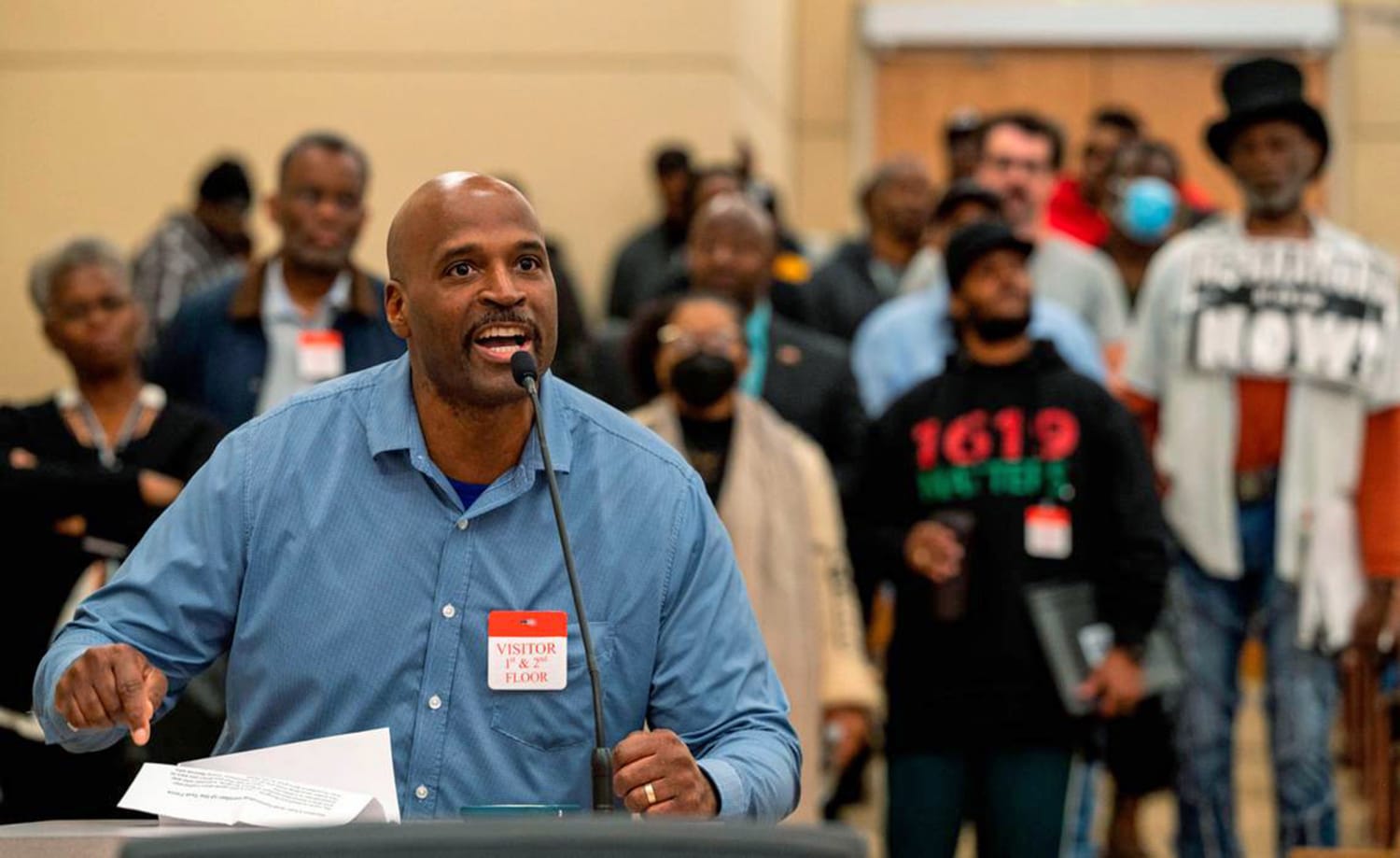

SACRAMENTO, Calif. — California’s highly anticipated reparations report, released Thursday, outlines how Black Californians can receive monetary compensation for the harms of slavery and systemic racism.
The task force proposed more than 100 statewide policies to address generations of discrimination and racial disparities. Still, the report does not issue a concrete dollar amount owed to individuals “who are able to demonstrate that they are the descendant of either an enslaved African American in the United States, or a free African American living in the United States prior to 1900.”
This final report follows a 500-page interim report released last year that detailed the legacy of slavery on California’s Black residents. That report was a scathing indictment of the ways the state was complicit in, and at times an active leader of, “innumerable harms” against the Black community.
The document released Thursday, coming in at nearly 1,100 pages, offers a comprehensive look at ways that the United States and California wronged descendants of enslaved Black people through racial terror, political disenfranchisement, unequal housing and educational opportunities, and environmental racism, among other harms. It also offers suggestions for issuing a formal apology and implementing a curriculum based on the task force’s findings.
Here are the key take-aways from the California reparations report.
How much money will the state issue to Black Californians?
The task force, in consultation with economists and policy experts, estimated the minimum dollar amount in harm that California has caused or could have prevented, totals at least $1 million per eligible person.
But it’s not so simple — that $1 million figure stems from the task force’s proposed calculation that could fluctuate. The formula includes dollars lost due to race-based health disparities, mass incarceration, housing discrimination, unjust land seizure and other harms that have had a major impact on Black Californians.
It will be up to the California Legislature to collect data, propose firm reparations amounts and determine who is eligible to receive those payments. The major components of the equation include:
Health Harms
The task force report determined that the difference in life expectancy between Black Americans and white non-Hispanics is due to unequal treatment in the health care system. The report estimates that the loss of value due to health discrimination is approximately $967,000 over the course of a lifetime given the average lifespan of a Black Californian, or around $13,600 per year in California.
Mass Incarceration and Over-Policing
The report also detailed the detrimental effects of the “War on Drugs” on Black life in California, from 1971 to 2020, which led to mass incarceration and the over-policing of Black communities. Although research shows that all races use and sell illegal drugs at the same rates, the Black community was singled out by police for drug-related arrests.
Therefore, as compensation for excess felony drug arrests and disproportionate prison time, it estimates that Black individuals who lived in California could be owed at least $115,000, or around $2,300 per year of residency in California from 1971 to 2020.
Housing Discrimination
The report contends that since California’s founding in 1850, state-sanctioned discriminatory housing practices, such as local zoning rules that enforced segregation, have led to Black homeownership being disproportionately lower than their white counterparts.
The task force suggests two ways of calculating loss from housing discrimination: calculating the average per capita white to Black homeownership wealth gap in 2019 taking into account interest, or calculating losses based on redlining.
Using the first method, the team found that the homeownership gap caused an approximate loss of $121,000 in 2020 dollars. The second method, based on redlining, results in an approximate $161,000 loss in homeownership wealth.
Unjust Property Takings
The report also mentioned that throughout California’s history, it has employed eminent domain to seize Black-owned properties, destroying Black neighborhoods and watering holes, in order to build highways, cities, and parks. The report suggests that the state legislature calculate the loss in property value experienced by displaced Black Californians or their descendants.
Devaluation of Businesses
In addition, discriminatory policies and practices devalued Black-owned businesses and stifled Black entrepreneurial opportunities through lack of access to capital and equity. The task force estimated that Black Californians were able to create around 60,000 fewer businesses than Black individuals in other states. It calculated that the value of the missing number of businesses could total upwards of $152,200,000,000, or roughly $77,000 per individual in California.
Who would be eligible to receive reparations in California?
In short, those first in line for monetary compensation would be individuals whose ancestors were enslaved in the U.S., or a free Black person living in the U.S. prior to 1900.
The chair of the reparations task force, Kamilah Moore, a reparatory justice scholar and attorney, wrote in a post on Twitter about the report’s release Thursday coinciding with the Supreme Court’s divisive decision to strike down race-conscious college admissions.
“Our reparations recommendations are not race-based, but rather are based on lineal descent,” Moore wrote.
What happens next with the legislation recommendations?
The ball is now in the California Legislature’s court.
The task force provided more than 115 recommendations for “critically needed law and policy reforms” that redress the persistent harms to the Black community from slavery and systemic racism.
Lawmakers will review the recommendations and have the authority to adopt, dismiss or adjust them. Whatever they decide must be approved by both houses before it will be presented to Gov. Gavin Newsom to sign into law.
Task force members shared insight into some of the recommendations at a news conference prior to the report’s official release.
“One of the recommendations is to provide free college tuition at public colleges and universities for descendants of slaves,” Moore said Thursday. “To that end, that recommendation remains unaffected by the SCOTUS decision today because it’s not a race-based admissions preference.”
How soon can eligible Black Californians expect to receive compensation?
It’s unclear if payments will even be issued, since such a compensation program would need to be passed by the state Legislature and approved by Newsom.
The financial compensation part of reparations is a concern, evident by a woman yelling during the hearing: “It’s my money, and I want it now.”
“I’m 78,” another member of the audience said during the public hearing section of the news conference Thursday. “I don’t want to wait anymore.”
 Latest Breaking News Online News Portal
Latest Breaking News Online News Portal





